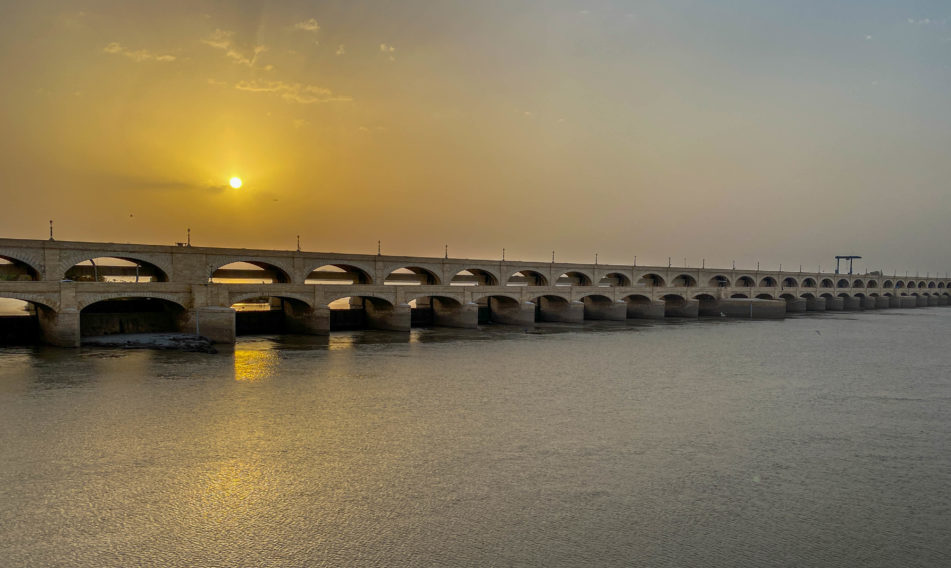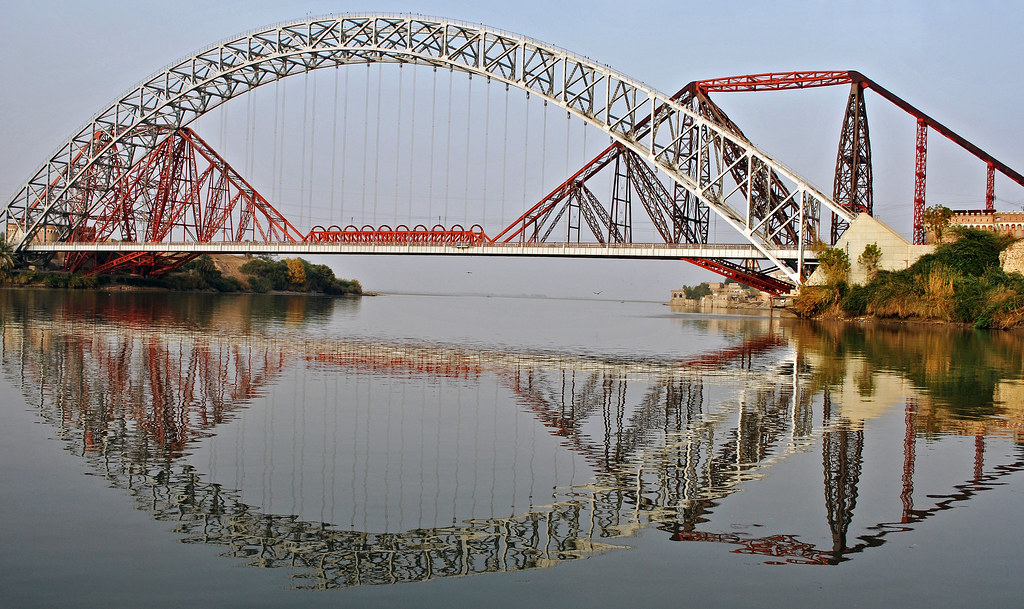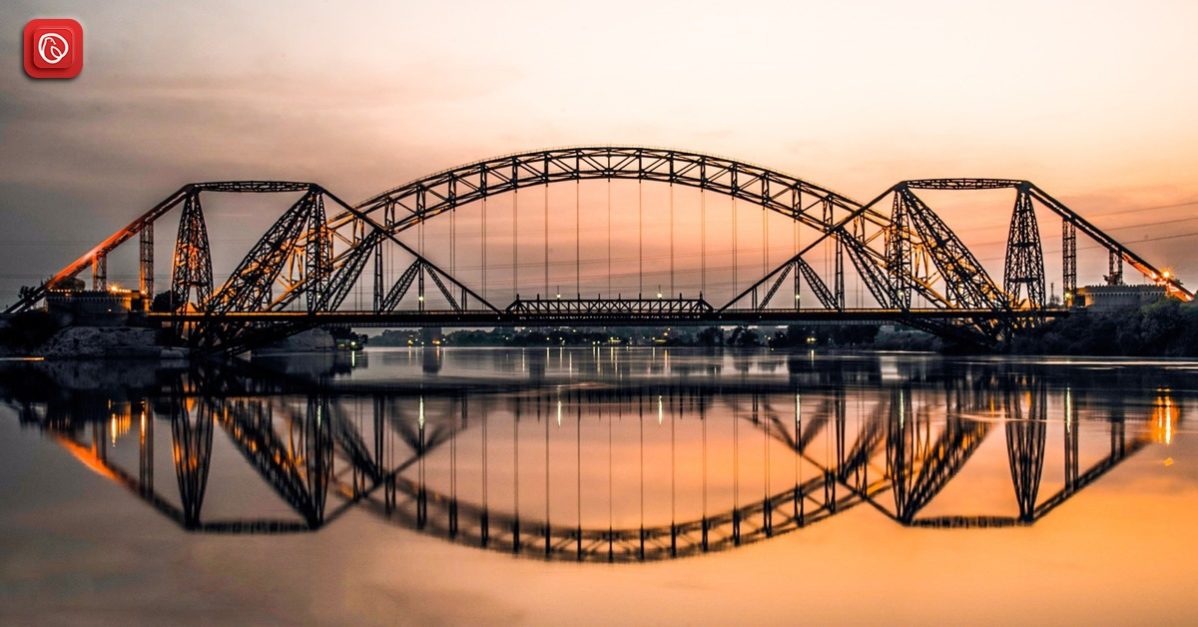Sukkur is a city in Pakistan located by the Indus River in the Sindh province. It is opposite the city of Rohri. Sukkur has a population of over three million people, making it the third most populous city in Sindh and the 14th largest city in Pakistan. At the time of colonialism, New Sukkur was established next to the existing community of Sukkur. The hills in the city and the river island of Bukkur are commonly called the “Gateway to Sindh.”
Graana.com has gathered all the necessary information about Sukkur below.
Origin of the Name

There are two potential explanations for the origin of the name Sukkur. According to one theory, it is derived from the Arabic term “shakkar,” which translates to sugar. It could be due to the area’s plentiful sugarcane fields. The other theory suggests that the name comes from the Sindhi word “Suukh,” which means comfort. It implies that the city is a place of relaxation and ease.
History
For thousands of years, people have lived in the area surrounding Sukkur. You can find the remains of Lakhan-jo-daro, which date back to the Harappan period of the Indus Civilization from 2600 BCE to 1900 BCE, an industrial park near the border of the city.
The city spans over 300 hectares and is the 2nd big town of the Indus Valley Civilization. Mohenjo Daro, another city, is only 75 kilometres away. Sukkur’s famous Hindu Sadh Belo shrine is a popular destination. The city experienced growth when a military cantonment was established in 1839.
The Masum Shah shrine and its 86-foot minaret in the city have a rich history dating back to 1607. It was a busy trading hub across the river from Rohri, which served as a significant port since the 1200s. British colonialism led to the establishment of “Modern Sukkur” and a military base, but it continued to prosper as a trading centre, eventually becoming a municipality in 1862.
Lansdowne Bridge

The Lansdowne Bridge in the city, built in 1889, was one of the first to cross the Indus River. It featured two large pylons. The Sukkur Barrage, completed in 1932, is a massive irrigation system created by Sir Arnold Musto and overseen by Sir Charlton Harrison. It can irrigate around 10 million acres of agri land through seven canals.
After Partition
After the Partition of British India in 1947, the city saw a decline in its Hindu population due to migration to India. Communal violence was not prevalent, but riots in Karachi in 1948 caused fear among the Hindu community.
Many fled while Muslim refugees settled in the area. The city’s economy grew with the Sindh Industrial Trading Estate in 1950 and the Ayub Bridge in 1962. Sadly, the Pakistan floods of 2010 caused widespread damage.
Geography
The Sukkur Gorge is a significant geological feature in the flat Indus Valley of Sindh and Punjab. It is situated on a small limestone formation known as the Jacobabad-Khairpur High and the Rohri Hills, which dates back to the Eocene period. Historically, it has served as the northern boundary of Sindh and is accompanied by a similar formation on Bukkar Island.
Economy
This city plays a vital role in the economy of northern Sindh by relying largely on the agricultural produce from the region’s farms. The city’s strategic location has made it a hub for exchanging and processing goods. It boasts a rich history in shipbuilding, contributing to a well-established shipbuilding industry.
The city’s well-connected road network has gained the attention of new productions. Furthermore, it cements its importance as a key player in the economic landscape of Pakistan.
Agriculture
This City has fertile land for cultivation and produces crops like rice, cotton, and tomatoes in the kharif season and wheat, barley, and watermelons in the rabi season. It’s famous for dates and has a protected Riverine forest covering an area of 510 km². The forests produce timber, firewood, and other valuable mine products.
Transportation
The Multan 5 motorway will connect Sukkur to Multan, Islamabad, Peshawar, and Lahore in the near future. This city will also benefit from the M-6 motorway, connecting it to Hyderabad and Karachi via the Motorway-9. Notably, the Motorway 5 and Motorway 6 motorways form essential components of the CPEC.
Rail
The main rail station in the city is Sukkur Railway Station, managed solely by Pakistan Railways. Trains such as Sukkur Express, Jaffar Express, and Akbar Express are available for passengers at this location.
Air
Sukkur Airport, situated 8 km from the city, provides straight to Islamabad, Karachi, and Lahore with Pakistan International Airlines.
Education
The following is the list of educational institutions in Sukkur city:
- Institute of Business Administration (IBA)
- Aror University of Art, Architecture
- Islamia Science College
- Ghulam Muhammad Mahar Medical College
FAQ’s
Q1: Where is Sukkur located?
A1: Sukkur is a city in Pakistan’s Sindh province, situated on the western bank of the Indus River.
Q2: What is the significance of Sukkur’s geography?
A2: Sukkur has a special land feature – a large limestone formation that stands out in the flat plains along the Indus Valley, covering Sindh and Punjab.
Q3: What is the historical importance of Sukkur?
A3: It has a rich history, dating back to the Indus Valley Civilization. It served as a significant trading centre, especially for agricultural produce.
Q4: What is the mainstay of Sukkur’s economy?
A4: The economy of this city is primarily dependent on agriculture, with a focus on trading and processing agricultural products. Additionally, it has attracted industries like chemical manufacturing and metalworking.
Q5: How well-connected is Sukkur to the rest of Pakistan?
A5: This city is well-connected by road, rail, and air. It is part of the China-Pakistan Economic Corridor (CPEC) and has motorway connections to cities like Multan, Lahore, Karachi, and more.
Q6: What are the main crops cultivated in Sukkur?
A: 6 It grows rice, bajra, cotton, tomatoes, peas in Kharif season and wheat, barley, gram, melons in rabi season.
Q7: Tell us about Sukkur’s educational institutions.
A7: It hosts several educational institutions, including IBA University, Begum Nusrat Bhutto Women University, Ghulam Muhammad Mahar Medical College, and Aror University of Art, Architecture, Design, and Heritage, among others.
Q8: How is Sukkur’s transportation infrastructure?
A8: It is well-connected by road, rail, and air. It has a motorway network under CPEC development, a railway station with passenger services, and Sukkur Airport offering flights to major Pakistani cities.
Q9: What is the historical significance of Sukkur’s bridges?
A:9 It is famous for its iconic bridges, such as the Lansdowne Bridge connecting Sukkur to Rohri through the Indus River and the Ayub Bridge, which were both significant in transportation.
Q10: How did the partition affect Sukkur’s demographics?
A10: The partition of British India in 1947 had a significant impact on Sukkur’s population, particularly its Hindu community, which saw a substantial migration to India during that period.
Follow Graana blog, if you want to know about Sukkur Postal Codes and best hotels in Sukkur.




